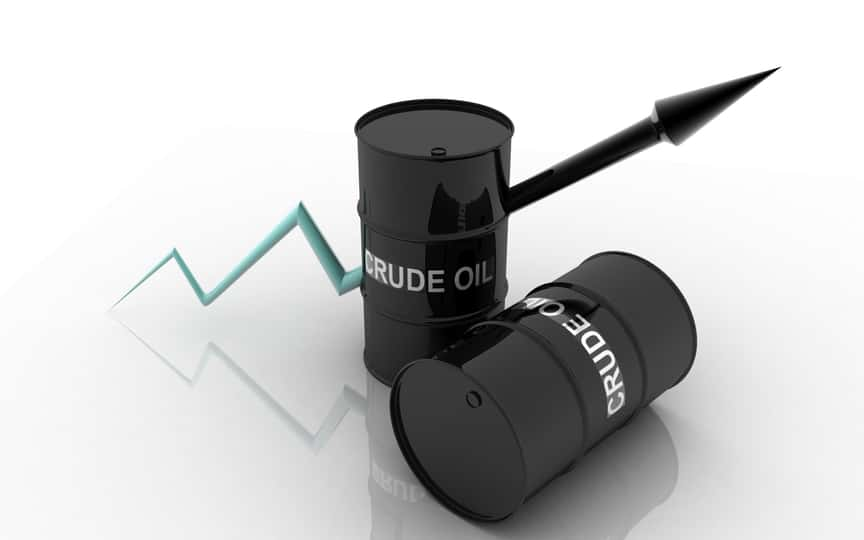Enterprise Products Partners L.P. (EPD - Get Rating) and Kinder Morgan, Inc. (KMI - Get Rating) are two prominent players in the oil and gas industry. EPD provides midstream energy services to producers and consumers of natural gas, natural gas liquids (NGLs), crude oil, petrochemicals, and refined products. It also operates refined products pipelines and terminals, ethylene export terminals, and provides refined products marketing and marine transportation services. In comparison, KMI operates as an energy infrastructure company in North America. The company operates through four segments ─ Natural Gas Pipelines; Products Pipelines; Terminals; and CO2. It owns and operates approximately 83,000 miles of pipelines and 143 terminals.
Rising demand for oil and natural gas upon the resumption of economic and industrial activities and its controlled supply by OPEC+ enabled the industry to enjoy high prices and rebound from their pandemic-lows last year. While OPEC+ decided to hike oil supply this February, the conflict between Russia and Ukraine, which led to bans on Russian energy imports, raised concerns over a global supply shortage, leading to skyrocketing oil prices. According to experts, even if OPEC+ boosts production, a decline in oil prices is unlikely in the near term.
High oil prices should benefit midstream companies with an established network of pipelines and terminals. Investors’ interest in this space is evident from the USCF Midstream Energy Income Fund ETF’s (UMI) 14.7% gains over the past three months versus the SPDR S&P 500 Trust ETF’s (SPY) 9.4% loss. Therefore, both KMI and EPD should benefit.
While KMI has gained 9.1% over the past three months, EPD has surged 15.5%. EPD is a clear winner with 8.5% gains versus KMI’s 5.7% over the past six months. But which of these stocks is a better pick now? Let’s find out.
Latest Developments
On February 17, 2022, one of EPD’s affiliates completed the previously announced $3.25 billion acquisition of Navitas Midstream Partners, LLC, a producer-focused midstream company engaged in the gathering, fractionation, and pipeline transportation of natural gas, NGLs, condensates, and crude oil. This acquisition gives EPD a foothold for natural gas gathering, treating, and processing in the core of the Midland Basin of the Permian.
On February 7, 2022, KMI received the necessary commercial commitments to construct a renewable diesel hub in Southern California. Once built, this hub will enable customers to aggregate renewable diesel batches (R99) in the Los Angeles area and move them on pipeline transportation and energy storage company SFPP, L.P. ‘s pipeline system to the high-demand markets in Colton and Mission Valley. This will create up to 20,000 barrels per day (bpd) of blended diesel throughput capacity at its truck racks, with the ability to expand in the future.
Recent Financial Results
EPD’s revenues for its fiscal 2021 fourth quarter ended December 31, 2021, increased 61.4% year-over-year to $11.37 billion. The company’s operating income came in at $1.40 billion, indicating a 98.2% year-over-year improvement. While its net income increased 191% year-over-year to $1.07 billion, its EPS grew 213.3% to $0.47. As of December 31, 2021, the company had $2.82 billion in cash and cash equivalents.
For its fiscal 2021 fourth quarter ended December 31, 2021, KMI’s revenues increased 33.5% year-over-year to $4.43 billion. The company’s operating income came in at $950 million, representing a 3.1% decline from the prior-year period. Its adjusted earnings came in at $609 million, representing a marginal improvement from the prior-year period. KMI’s EPS remains unchanged at $0.27. The company had $1.14 billion in cash and cash equivalents as of December 31, 2021.
Past and Expected Financial Performance
Over the past three years, EPD’s tangible book value, total assets, and levered free cash flow have increased at CAGRs of 4.9%, 5.8%, and 226.5%, respectively.
EPD’s EPS is expected to grow 6.7% year-over-year in fiscal 2022, ending December 31, 2022, and 6.2% in fiscal 2023. Its revenue is expected to grow 8% year-over-year in fiscal 2022 and 2.6% in fiscal 2023. Analysts expect the company’s EPS to grow at a 10.2% rate per annum over the next five years.
In comparison, KMI’s total assets and levered free cash flow have declined at CAGRs of 3.7% and 5.6%, respectively, over the past three years. Its tangible book value increased at 1.5% CAGR over the past three years.
Analysts expect KMI’s EPS to fall 18.9% year-over-year in its fiscal year 2022, ending December 31, 2022, but improve 3.7% in fiscal 2023. Its revenue is expected to decline 16.7% year-over-year in fiscal 2022 but rise 0.4% in fiscal 2023. The company’s EPS is expected to decline at a 3.6% rate per annum over the next five years.
Valuation
In terms of forward EV/EBITDA, KMI is currently trading at 5.21x, 199.4% higher than EPD’s 1.74x. In terms of forward EV/Sales, EPD’s 9.49x compares with KMI’s 10.19x.
Profitability
EPD’s trailing-12-month revenue is almost 2.5 times KMI’s. EPD is also more profitable, with an 11.4% net income margin versus KMI’s 10.7%.
Furthermore, EPD’s ROE, ROA, and ROTC of 18.3%, 5.5%, and 6.4% compare with KMI’s 5.7%, 4%, and 4.3%, respectively.
POWR Ratings
While EPD has an overall B grade, which translates to Buy in our proprietary POWR Ratings system, KMI has an overall C grade, equating to Neutral. The POWR Ratings are calculated by considering 118 distinct factors, each weighted to an optimal degree.
In terms of Momentum, both EPD and KMI have been graded an A, reflecting their impressive price gains over the past year. EPD has surged 15.5% over the past three months, while KMI returned 9.1%.
EPD has a B grade for Value, consistent with its lower-than-industry valuation ratios. EPD’s 1.12x forward Price/Sales is 25% lower than the 1.49x industry average. However, KMI’s C grade for Value is in sync with its slightly higher-than-industry valuation. The company has a 2.79x forward Price/Sales, 87.2% higher than the industry average of 1.49x.
Of the 34 stocks in the A-rated MLPs – Oil & Gas industry, EPD is ranked #3.
KMI is ranked #62 of 88 stocks in the B-rated Energy – Oil & Gas industry.
Beyond what we have stated above, our POWR Ratings system has also rated KMI and EPD for Stability, Sentiment, Growth, and Value. Get all EPD ratings here. Also, click here to see the additional POWR Ratings for KMI.
The Winner
Global midstream oil and gas companies are expected to benefit substantially from rising oil prices. While KMI and EPD are well-positioned to gain, relatively higher profitability and lower valuation make EPD a better buy here.
Our research shows that the odds of success increase if one bets on stocks with an Overall POWR Rating of Buy or Strong Buy. Click here to access the top-rated stocks in the MLPs – Oil & Gas industry, and here for those in the Energy – Oil & Gas industry.
Want More Great Investing Ideas?
EPD shares rose $0.01 (+0.04%) in after-hours trading Wednesday. Year-to-date, EPD has gained 11.98%, versus a -8.28% rise in the benchmark S&P 500 index during the same period.
About the Author: Sweta Vijayan

Sweta is an investment analyst and journalist with a special interest in finding market inefficiencies. She’s passionate about educating investors, so that they may find success in the stock market. More...
More Resources for the Stocks in this Article
| Ticker | POWR Rating | Industry Rank | Rank in Industry |
| EPD | Get Rating | Get Rating | Get Rating |
| KMI | Get Rating | Get Rating | Get Rating |






